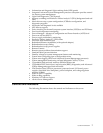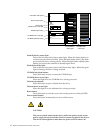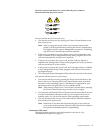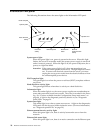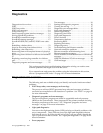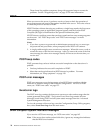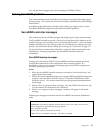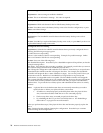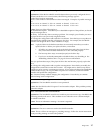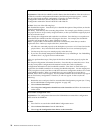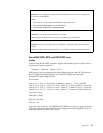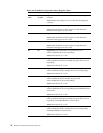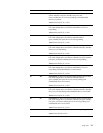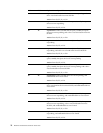
Diagnostics 15
You will get these messages only when running the SCSISelect Utility.
Solving ServeRAID problems
This section describes the ServeRAID text and numeric messages that might appear
during startup. This section also includes some basic information about rebuilding a
defunct drive.
In addition to the information provided in this section, you might want to use the
ServeRAID IPSSEND program to help isolate ServeRAID problems.
ServeRAID controller messages
This section lists the ServeRAID messages that might appear during system startup.
The ServeRAID controllers provide a Device Event Log that collects statistics on the
number and types of events that occur on a selected physical drive. After correcting a
problem with the array, clear the log so that you can identify any subsequent errors
quickly. For information about clearing the event log, see "eraseevent" on page 137.
All physical drives contain unique identifiers, such as the drive serial number and
manufacturer. During configuration, the ServeRAID controller stores this
information.
ServeRAID startup messages
During power-on self-test (POST), the ServeRAID controller compares the stored
configuration information to the configuration that is actually present. If a
discrepancy exists, one or more status messages appear after POST completes, but
before the operating system loads.
Notes:
1. When the ServeRAID controller requires your input, a list of function keys will
appear below the message.
2. Where the Action information tells you to start the IBM ServeRAID configuration
program, insert the IBM ServeRAID Support CD into the CD-ROM drive; then,
restart the server. The Action column also provides general information about
the message.
3. Where SID or ch appears in these messages, sid is the SCSI ID for the device, and
ch is the channel to which the device is attached.
4. Where m or n appears in these messages, a number will appear in the actual
message.
Following are messages associated with the ServeRAID subsystem in alphabetical
order.
A new drive was installed.
Explanation: When the ServeRAID controller detects a new drive that is not part of the
current configuration, the following message appears:
x new ready drives found
where x is the number of ready drives found.
Action: This is an information message. No action is required.



